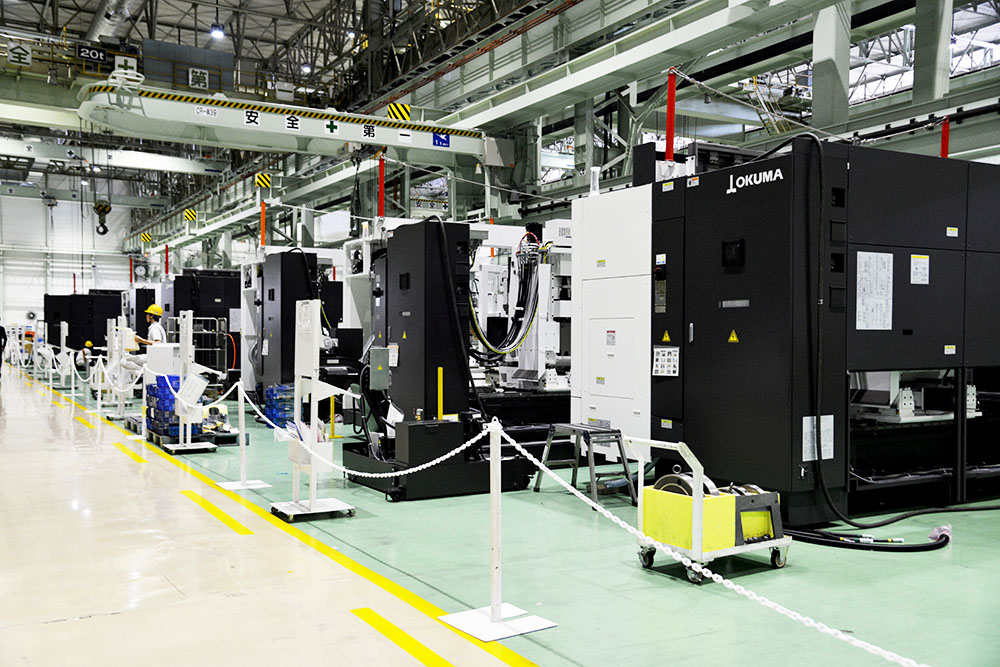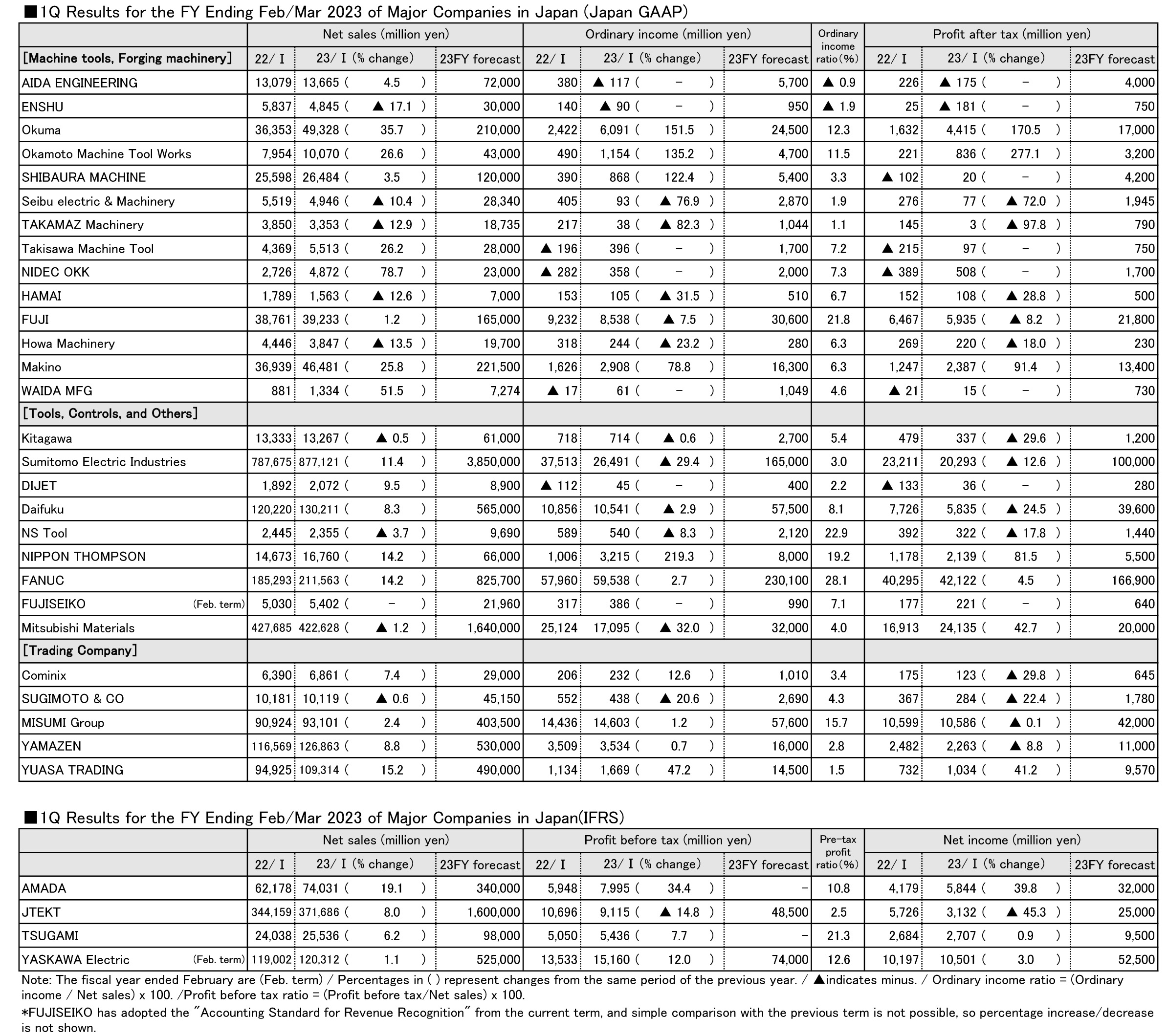
- News
- Basics
- Products
- JP Job shop
- Exhibition
- Interview
- Statistic
- PR
- Download
- Special contents
News
October 6, 2022


Staff Editor: Masanobu Nishizuka
The 1Q financial results (from April to June 2022) for the fiscal years ending February/March 2023 for 32 major FA-related companies in Japan have been released. Among the 31 companies that can be compared to the same period of the previous year, 9 companies increased both sales and profits on a net income basis. Five companies recovered to profitability. On the other hand, six companies recorded increases in sales, but decreases in profits, and eight companies recorded decreases both in sales and profits. Despite the high level of sales, some companies have begun to struggle to secure profits, showing a mixture of favorable and uncertain factors.
The global economy during the 1Q of the fiscal year (FY) ending March 31, 2023, showed a resumption of economic activity from the pandemic. Despite the Russian invasion of Ukraine, price increases mainly in energy sectors, and the re-expansion of COVID-19 in China and other countries, the economy remained on a recovery track. In Japan, efforts to balance COVID-19 infection control measures and economic activity led to a recovery in business production and exports.
The machine tool industry has also recovered with the recovery of the global economy. According to the Japan Machine Tool Builders’ Association (JMTBA), total machine tool orders for the period April-June 2022, the 1Q of the FY ending March 2023, increased 21.9% year-on-year (YoY) to 463 billion yen. It was also close to the record high annual order amount of 471.6 billion yen recorded in the same period in 2018.
This report summarizes the market conditions of FA companies in Japan, including 4 companies that have adopted International Financial Reporting Standards (IFRS).
Among the 31 companies that can be compared with the same period of the previous year, 9 companies increased both sales and profits on a net income basis, and 5 companies returned to profitability. On the other hand, six companies reported increases in sales but decreases in profit, one company reported a decrease in sales but a profit, eight companies reported a decrease both in sales and profit, and two companies went into the red.
By market, business conditions were generally favorable, both domestically and internationally. Okuma summarized the results with “generally firm, although there are some strong and weak trends depending on the country or area”. FANUC also noted that “demand for machine tools remained strong on a global scale, especially in China, but also in Europe, the U.S., Asia, and Japan, and CNC system sales increased”. NIDEC OKK reported a profit for the first time in four years, driven by “aggressive order-taking activities, synergy effects across group companies, and intensive cost reductions”.
Furthermore, energy-related and environmentally conscious capital investment is increasing, as “capital investment for decarbonization in the domestic automobile industry is growing steadily” (by YAMAZEN) and “orders are increasing for wind power generation in China and in energy use in the U.S.” (by SHIBAURA MACHINE).
Orders also seem to be favorable. Makino said, “Orders received in the U.S. and China were intensive, and the weak yen supported record-high quarterly orders”. Three of the 32 companies have already revised their annual forecasts for sales and net income upward.
On the other hand, there were also some companies with declining sales, profits, or losses. Since the same period of the previous year, market conditions have been at high level and remain firm. Beyond that, longer delivery times and various cost increases due to parts shortages are having some impacts on the market.
AIDA ENGINEERING posted a net loss despite higher sales. The company explained, “Orders received reached a record high on a quarterly basis due to expanding demand related to electric vehicles (EVs). Sales also increased, but came in below expectations, affected by the shortage of electronic components and the lockdown in China. There were also various cost increases”.
There are also concerns, mainly from toolmakers, about the rising cost of raw materials caused by the weak yen and high resource prices. Despite the overall firmness of the market, production has been tightened due to the parts shortages. Rising raw material and logistics costs are seriously putting pressure on profitability.

September 16, 2022